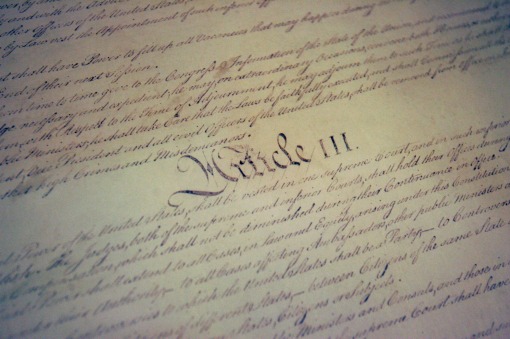In my Constitutional Law class, we have begun studying The First Amendment.
The beginnings of U.S. First Amendment Law were not so pretty. Early U.S. law forbid several kinds of speech. Not so long ago, in the early 20th century, when the U.S. is at war, the following was illegal:
- attempting to cause insubordination, disloyalty, refusal of duty
- displaying the flag of a foreign enemy
- publishing disloyal language about the form of government, the flag, or the Constitution
The laws evolved a bit over the years, even into the 1920’s there were many kinds of speech that were illegal, most of them relating to trying to squash the communist party movements in the U.S. There were convictions for holding meetings, advocating the illegality of the draft, and several other things. Justices in those decades often cited the fact that you can’t yell fire in a crowded theater (unless there is one), a proof that the First Amendment should have limitations.
Probably the most bothersome thing about what I read this week was the fact that the current standard for free speech is found in the 1969 case of Brandenburg v. Ohio, where the Supreme Court ruled that the Constitution protected inflammatory speech, in particular, a very nasty KKK rally. I wonder, if it had been a Black Panthers rally, if they would have reached the same result. But that is for the historians. Whatever the means that we got there is, the current judicial standard for free speech is this:
The constitutional guarantees of free speech and free press do not permit a state to forbid advocacy of
- the use of force, or the violation of law
- except where such advocacy is
- directed to inciting or producing imminent lawless action AND
- is likely to incite or produce such action
Seems to me that a KKK rally in the late 60’s would in fact qualify under this standard.
But basically there is a fine line here, which is this: belief, and promoting a belief is protected. Promoting violent criminal action is not.
A couple of important notes from earlier cases:
- Advocacy, means people are urged to do something, rather than believe something. (Yates v. United States)
- To be prohibited, words must be used in a way that they create a “clear and present danger” that they will bring about substantive evils. (Schenck v. United States)
- To put it another way, 1) there must be reasonable ground that the danger is imminent, and
2) the evil advocated must be a serious one. (Whitney v. California, concurrence)
Ooooh. Fun!

Comments